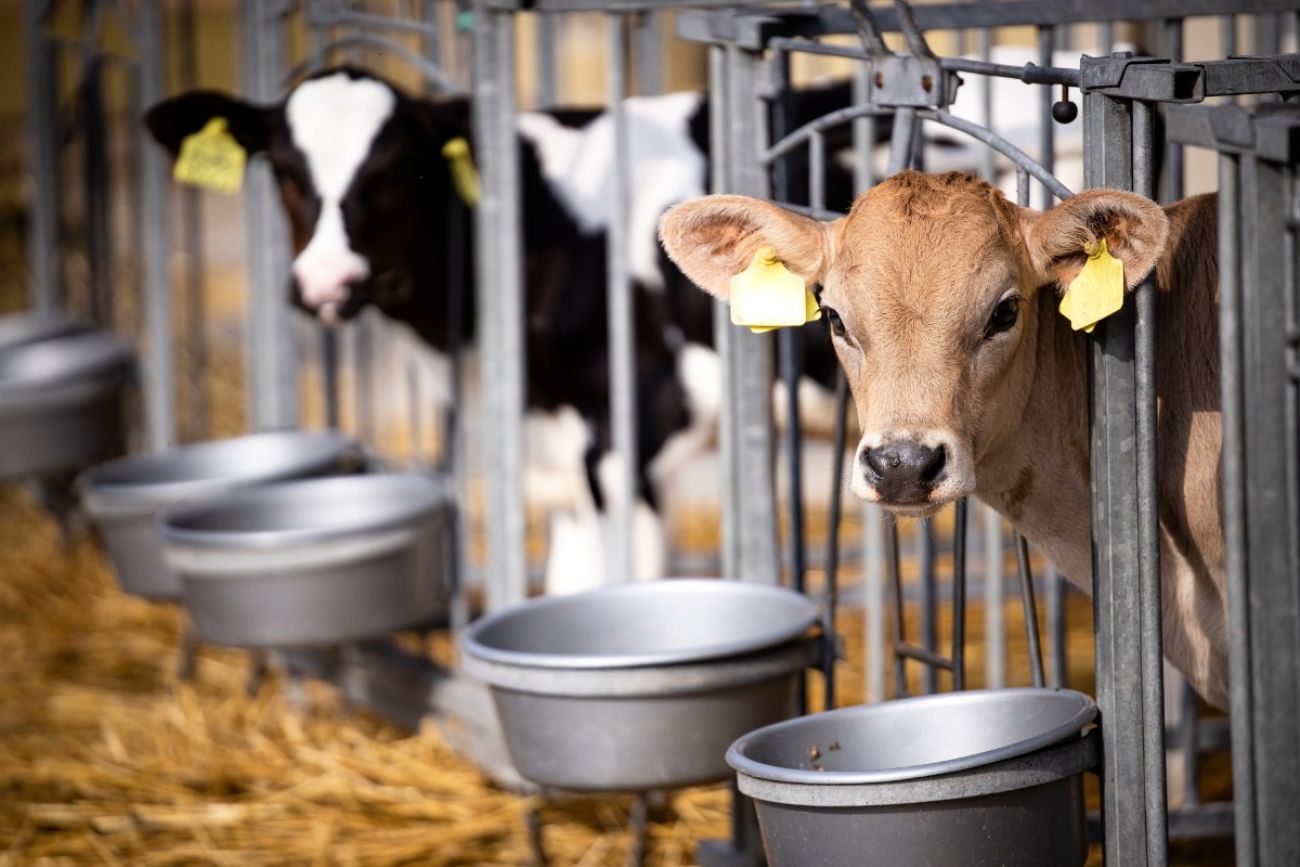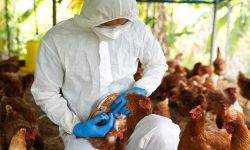Michigan farmworker is 2nd known human case of bird flu in nation this year

- Michigan has reported its first human case of the highly pathogenic avian influenza (HPAI), or bird flu
- Health officials say risk to the public remains low
- It’s unclear when or where the worker was infected
- May 31, 2024 update: Nation’s third human bird flu case detected in Michigan
A Michigan dairy worker has become only the second person in the nation this year known to have contracted highly pathogenic avian influenza, or bird flu.
The pathogen — influenza A (H5) — already has infected cattle herds, turkeys and millions of chickens in Michigan as part of a national outbreak. In March, a Texas farmworker was infected, reporting “redness and discomfort in the right eye,” according to a case report in the peer-reviewed New England Journal of Medicine.
Similarly, the Michigan dairy worker only reported eye symptoms, according to information released Wednesday by the U.S. Centers for Disease Control and Prevention.
Related:
- Michigan farmers must step up bird flu fight under new emergency order
- Bird flu hits turkey flock in Newaygo County as virus spreads in Michigan
- Bird flu found in hens at Michigan’s top egg producer
- Bird flu found in cattle on a dairy farm in central Michigan
The Michigan case was mild and the worker has “recovered,” according to the Michigan Department of Health and Human Services. Federal and state officials maintain that the risk to the public is low. Regular surveillance systems across the nation have detected no unusual flu activity, according to the CDC.
“Information to date suggests this is a sporadic infection, with no associated ongoing spread person-to-person,” according to the Michigan health department release.
In Michigan, the case initially went undetected. A nasal swab first tested negative for influenza in Michigan, but an eye swab from the patient was shipped to CDC. There, it tested positive for the flu virus, according to the CDC.
Eye infections, or conjunctivitis, have been associated with previous human infections with avian influenza A viruses around the world, but it’s known exactly how eye infections result from avian influenza exposures. It may be from splashes of contaminated fluid from the livestock or when workers — with the virus on their hands — touch their eyes. “High levels” of the virus have been found in unpasteurized milk from infected cows, according to the CDC.
That means “people with close or prolonged, unprotected exposures to infected birds or other animals” and to those animals’ environments should take precautions, according to the CDC.
Because of the increased surveillance, it comes as little surprise that human cases may be detected, health officials have said.
The virus has been circulating in dairy and poultry farms across the U.S. for several months, and was detected in Michigan cattle March 29. Just more than a month later, the Michigan Department of Agriculture and Rural Development’s director Tim Boring directed farmers to take extra precautions to separate potentially infected livestock and to minimize interaction between humans and farm animals.
Boring, in the statement released Wednesday afternoon, said finding the human case is “exactly how public health is meant to work, in early detection and monitoring of new and emerging illnesses.”
And he urged farmworkers to “report even mild symptoms,” in an email to Bridge sent through the department’s communications department.
Still, it was not clear what part of the state nor when the case occurred.
MDARD spokesperson Jennifer Holton referred questions to the MDHHS, citing the health department as the lead agency for any human illness. Health department spokeswoman Chelsea Wuth, citing the farmer’s confidentiality, declined to release to the public where the case occurred or a broad time frame for the case.
Since 2022, there have been three human cases related to bird and dairy exposure in the U.S. In addition to the Texas case, Colorado reported a human case in 2022 — the first in the U.S. In the 2022 case, the worker was involved in a poultry operation.
See what new members are saying about why they donated to Bridge Michigan:
- “In order for this information to be accurate and unbiased it must be underwritten by its readers, not by special interests.” - Larry S.
- “Not many other media sources report on the topics Bridge does.” - Susan B.
- “Your journalism is outstanding and rare these days.” - Mark S.
If you want to ensure the future of nonpartisan, nonprofit Michigan journalism, please become a member today. You, too, will be asked why you donated and maybe we'll feature your quote next time!








